A few years ago I purchased a 1985 vintage JET 12 X 36 BD metal lathe.
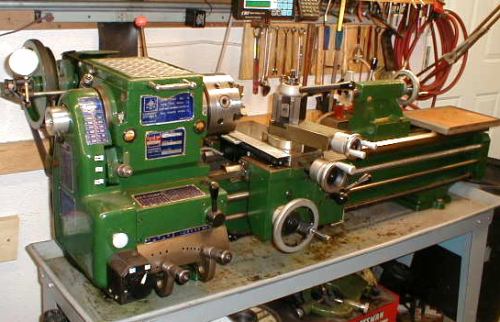
This is a wonderful machine for the type of lathe work I perform in my home shop. But it used a 230V AC motor. I had to rewire my shop to connect it to 230V. This wasn’t a big deal as I already had 230V in the shop for my welders.
A bigger issue was surface finish and the lathe never being at the correct RPMs for the work at hand. A single phase, AC motor, has what some folks refer to at “60hz Ripple”. The AC ripple causes the motor to vibrate and transmit this vibration to the cutting tool, leaving a less than perfect finish. Three phase motors and DC motors do not have this issue. Secondly, this lathe uses a series of belts and pullys to change speed. It is a pain in the neck to say the least. Especially if you are all set up and starting the cut when you realize you are in the wrong speed.

A DC motor would solve all of this.
The search was on for a suitable DC motor. Although the lathe’s AC motor was rated at 2.5 HP, I could easily stop the shaft with a gloved hand on the 3″ pully. I’ve had experience with DC motors of only 3/4 HP that I could stall no matter what. DC motors have built in tachometers that communicate with the DC electronic drive controller. If the motor starts to slow, more voltage is added, up until the motor or the controller burns out or the limit fuse or circuit is reached. So I felt 3/4 HP, DC would be good enough.
When I started looking for DC motors I found them to be extremely expensive. Used DC motors were not much of a savings, and of questionable past life history. As luck would have it, Ebay was offering an unused 3/5 HP, Dayton, DC motor from a Science Museum down in Atlanta that I was able to snatch for $90! It arrived in like new condition. The museum had it hooked up to a big wheel as a generator. Kids would spin the wheel and see how much energy they were producing. A very easy “past life”.

(I’ve recently converted my bandsaw to DC drive. I found a fantastic source for quality DC motors on AMAZON.COM.   http://www.amazon.com/dp/B00KARD85C/ref=sr_ph?ie=UTF8&qid=1420212798&sr=1&keywords=90v+dc+motor   as this is written, 1-2-15, a 3/4 HP DC motor for $179. AMARINE brand:
- Highest quality oriented magnets
- F insulation class
- CE listed, CE file No. DW2011CE0047 01
- 56C face and Removable mounting bases for dual mounting versatility
- Continuous duty; Dynamic balanced armature for smooth operation; Totally Enclosed Non Vent; Double seal ball bearings with permanent grease filling for long life; Long life brushes;
This is the best deal I’ve been able to find )
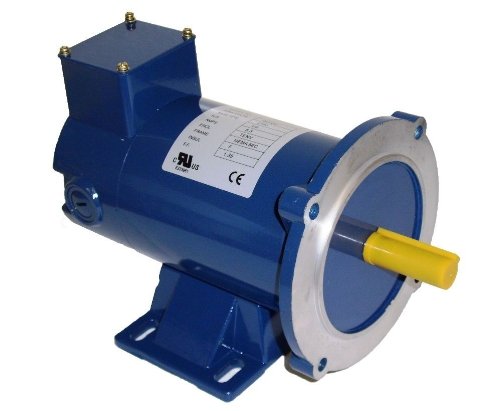
So with motor in hand I needed a DC motor controller. This lead me to one of my favorite sources for “stuff”….. Surplus Center   http://www.surpluscenter.com/
These folks sell new and used components for just about anything you might want to build or modify in your shop.
They offered a fantastic DC controller   http://www.surpluscenter.com/Electric-Motors/DC-Motors/Motor-Speed-Controllers/90-180-VDC-SPEED-CONTROL-W-POT-11-2269.axd
SCR MOTOR SPEED CONTROL FOR DC MOTORS
Brand new MINARIK model MM23001C. Adjustable SCR speed controller for permanent magnet or shunt wound, brush type motors. Ideal for motors in the range of 1/20 Hp to
2 Hp. Compact design in industry standard MM footprint. Optional heatsink (sold separately) can be added to boost output current capacity. Integral potentiometers for setting minimum and maximum speed, acceleration and deceleration, torque and IR compensation. Speed control potentiometer included.
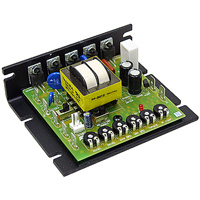
SPECIFICATIONS
- Input: 115 or 230 VAC, 50/60 Hz
- Armature voltage (115 VAC IN): 0-90 VDC
- Armature voltage (230 VAC IN): 0-180 VDC
- 5 Amps output, 10 Amps w/heatsink
- 1/8 Hp to 1 Hp @ 90 VDC
- 1/4 Hp to 2 Hp @ 180 VDC
- 1% regulation over 60:1 speed range
- Size 4-5/16″ x 3-19/32″ x 1-19/32″
- Shpg. 2 lbs.
$81.95 as of 1-2-15
With these two devices at hand, lets convert the lathe
The new DC motor fit easily where the AC motor lived. I could have removed all the ancillary pulleys and mounted the motor to directly drive the spindle. But it was easier to leave everything in place and the advantage of two drive belts will filter the little vibration the new motor might posses even further.
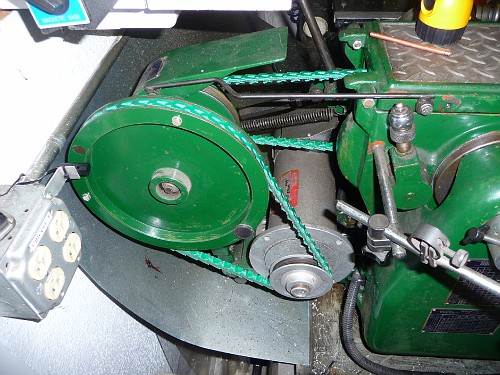
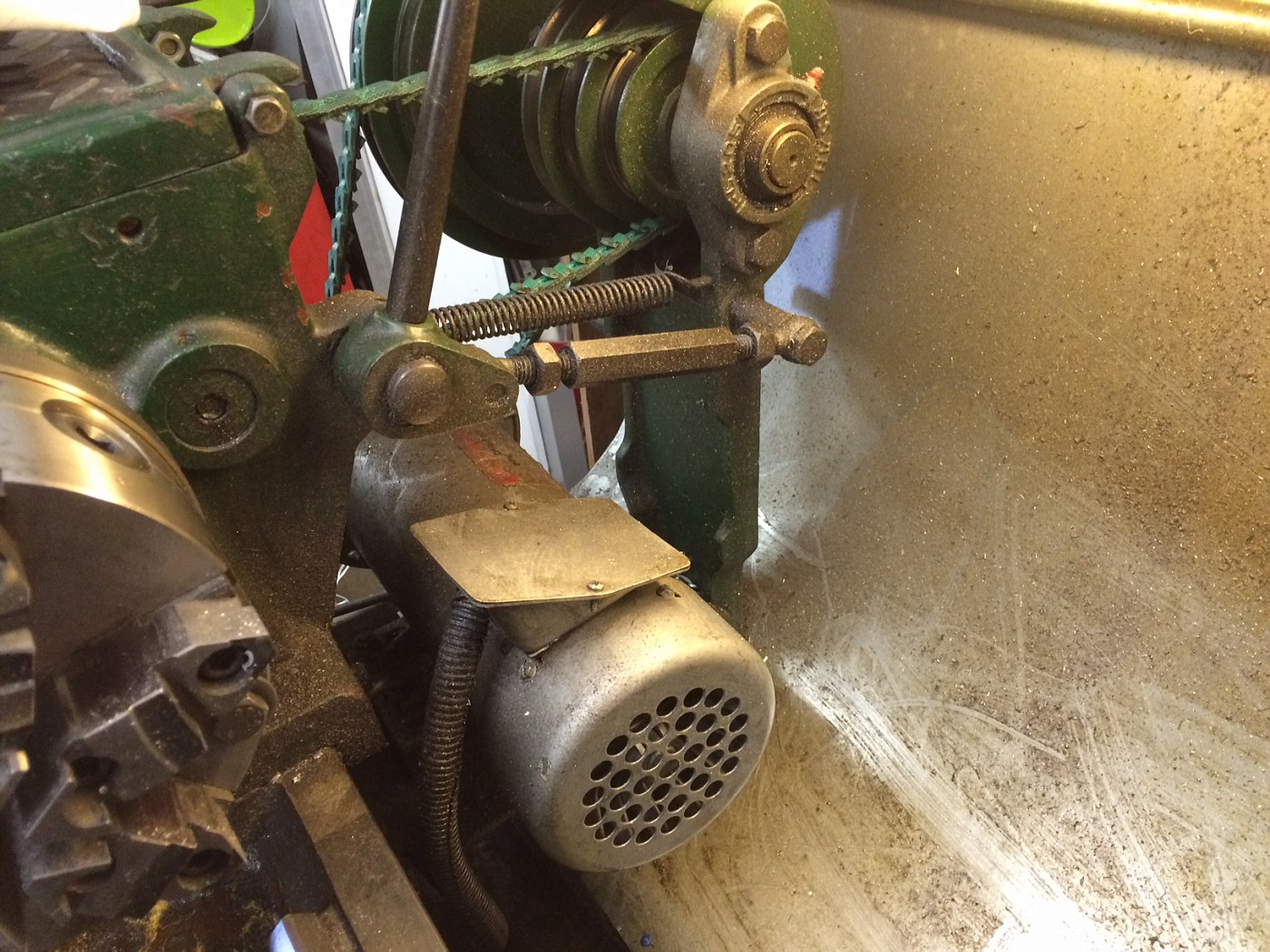
Once the motor was installed, it was time to find a place for the DC control board.
I mounted it on the back of the lathe and created a shield out of sheet metal to protect it from metal chips, but to allow lots of air circulation.
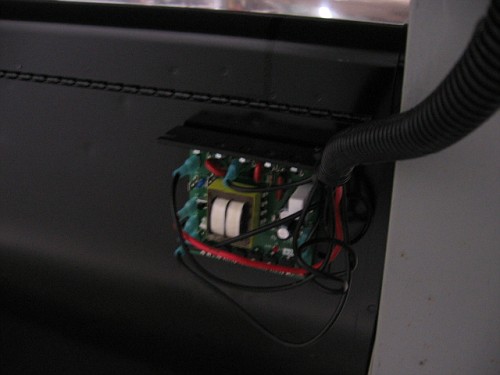
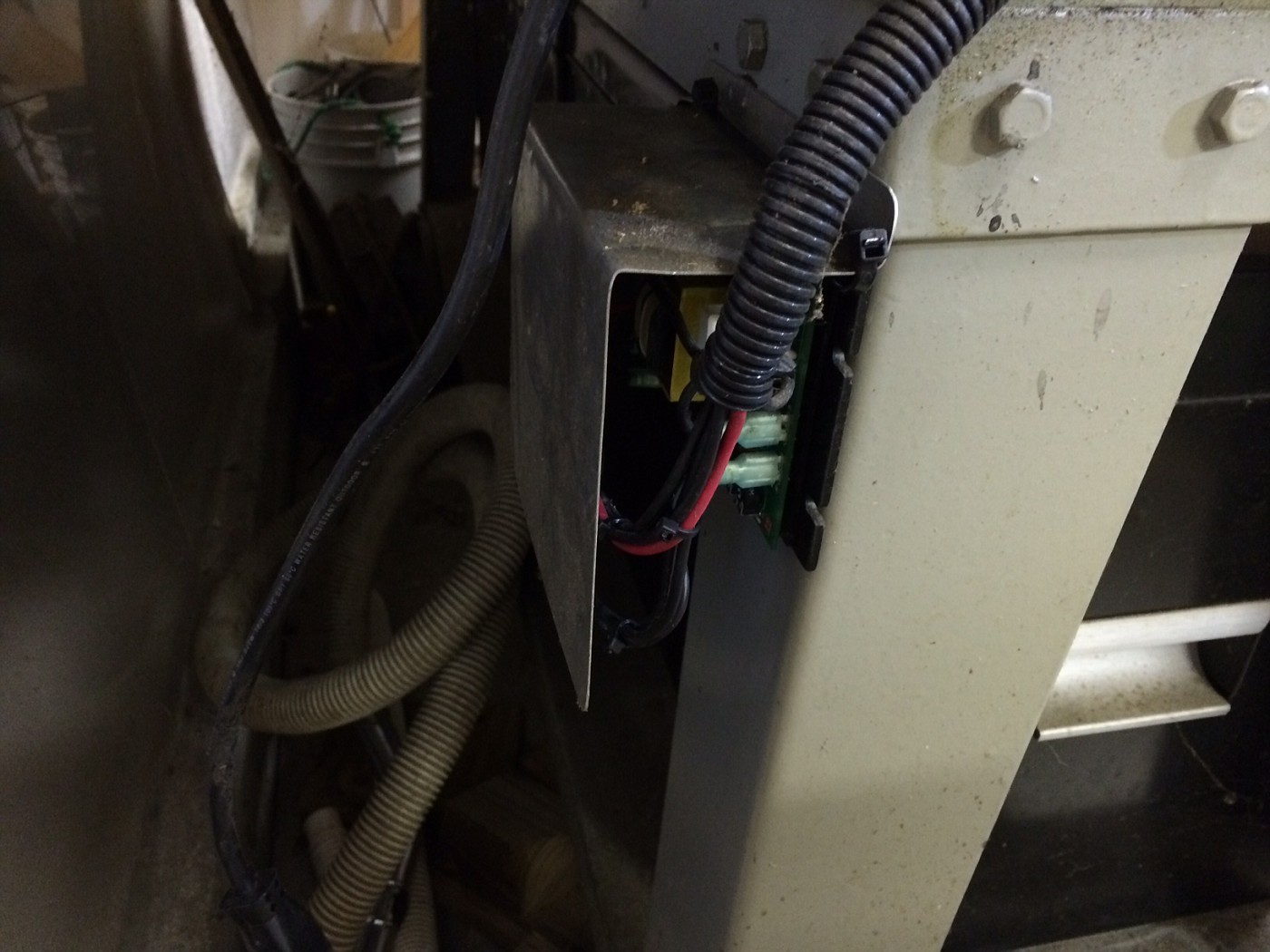
Next up was some type of control panel on the front of the lathe. This needed… main power ON / OFF, Forward and Reverse and SPEED control
A simple 4 X 4 Electrical box with a blank cover filled the bill:
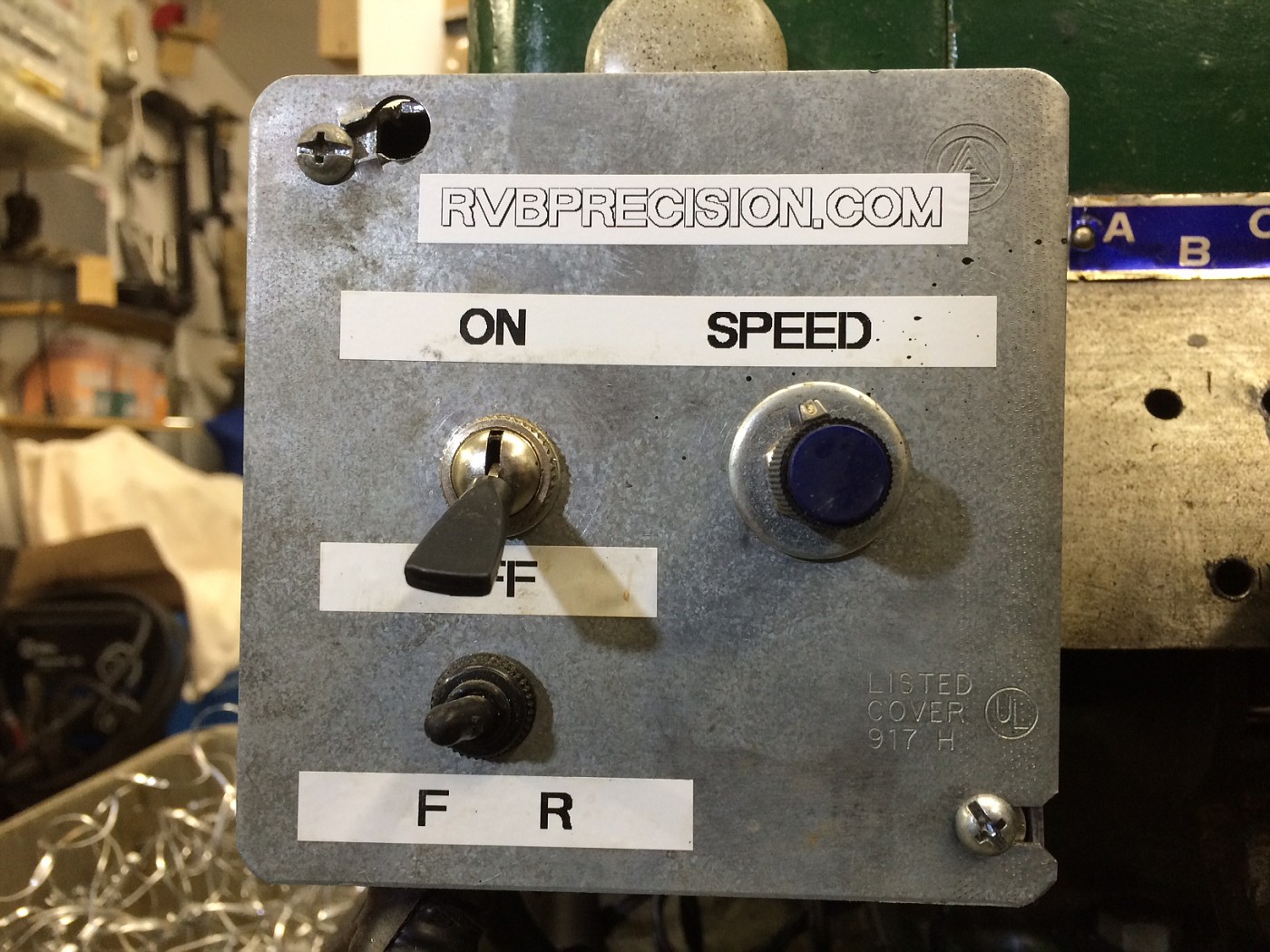
I used a large toggle switch for main power that is easy to hit if I should find myself “wrapped up in my work” so to speak….. Â 🙂
The F/R switch is a weather proof, mini switch that I bought a bag full from Surplus Center a few years ago. Great little switch! It is a DPDT / Center Off switch. While the lathe is running. if this switch is put to the center, off, position. The lathe stops IMMEDIATELY! Â The main POWER switch lets the lathe coast to a stop. This instant stop seems very abrupt and I’m not sure it is good for the longevity of the motor so I do not use it.
Wiring of the DC control board was very straight forward.
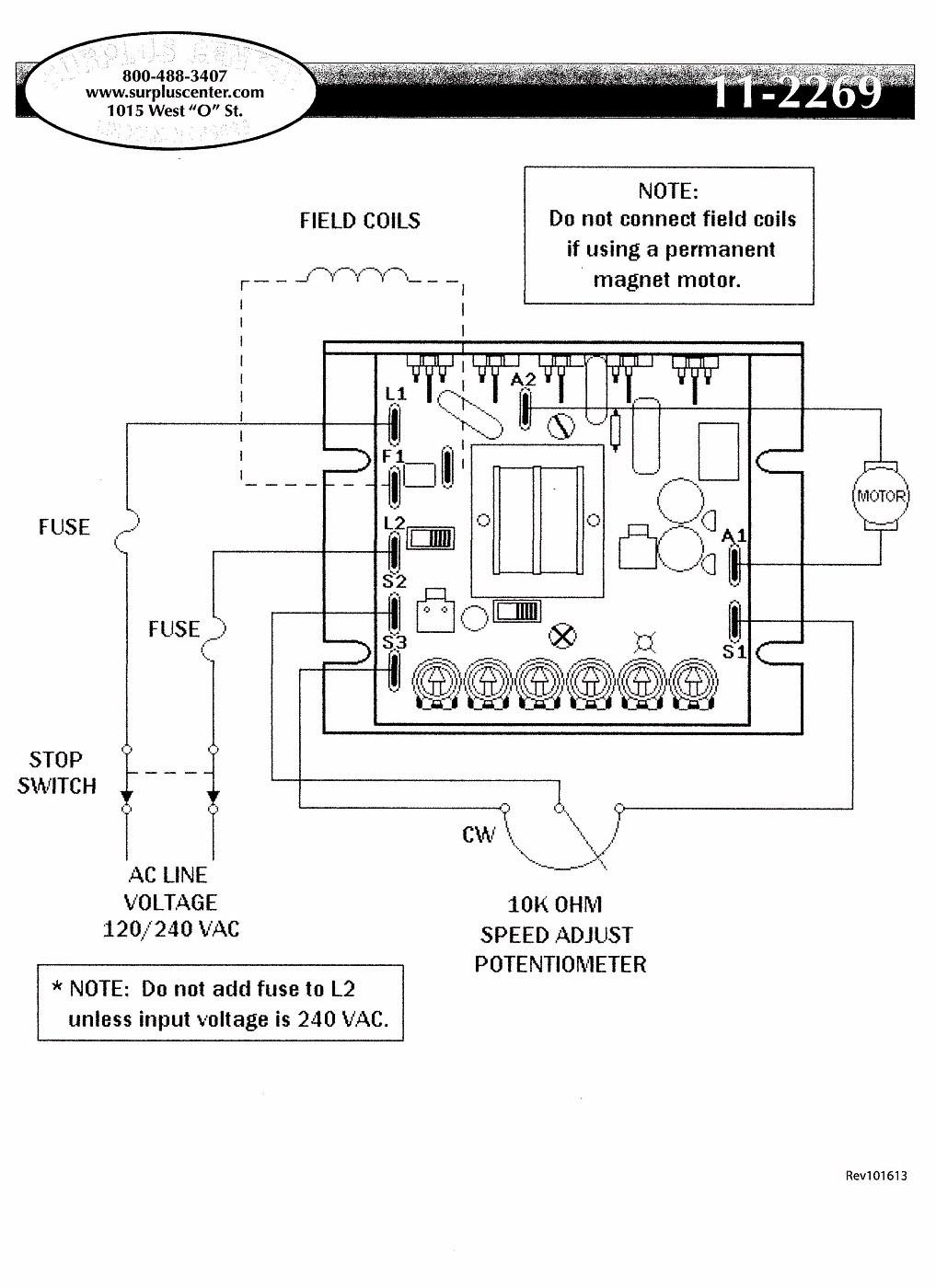
(WIRING Instructions and this diagram are available here:  http://www.surpluscenter.com/_MoreSpecs/i11-2269.pdf  and here:  http://www.surpluscenter.com/_MoreSpecs/as11-2269.pdf  )
Everything wired up and mounted we are good to go! Here is a video of the conversion in motion.
http://public.fotki.com/Rbertalotto/machine_tool/jet-1236-dc-motor-c/pc290016.html
If this link doesn’t work, it is available on YouTube:
This is easily the best modification I’ve added to the shop. I love the power and the ability to visually match the RPM of the stock to the finish required by simply turning a knob. Fantastic!
I hope you enjoyed this little article. Lots more to see at www.rvbprecision.com and lots more pictures of this and other projects here:
http://public.fotki.com/Rbertalotto/
Thanks for looking!

6 comments on “Metal Lathe DC Motor Conversion – JET 12 X 36 BD”